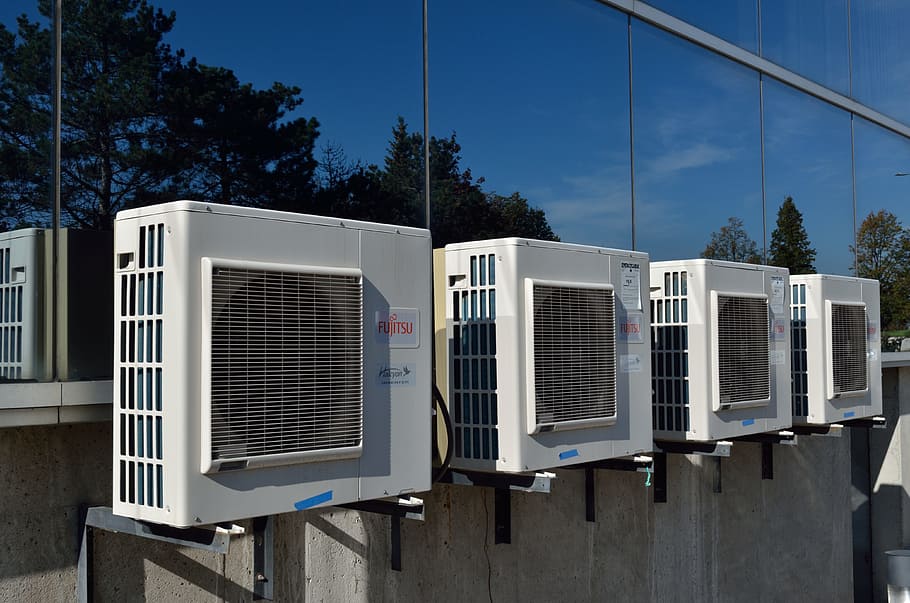
Air conditioner installation can be an involved process; therefore, hiring a professional can make the experience less daunting and stressful.
Your contractor may recommend installing duct work. In such an instance, it would be wise to do this before installing the drywall.
Choose the Right Unit
Choose an air conditioner suitable to the task at hand to keep your home or commercial property as cool as possible. To make sure that the system fits appropriately, calculate the area to be cooled before purchasing an AC with appropriate capacity.
Planning permission may be needed depending on its size and impact on both neighboring properties and the environment. Furthermore, you should check if you live in a conservation area or listed building as they often impose stricter rules that must be adhered to when installing external air conditioning units.
Consider also the noise levels produced by your air conditioning unit. If it becomes an inconvenience to nearby residents, complaints could result in its removal. To mitigate this possibility, soundproof any loud components and select units with low noise ratings; alternatively try to place the units as far from buildings of nearby neighbors as possible.
Get Permission
Homeowners usually need a permit when installing or replacing air conditioning systems. Filing for such permits ensures that equipment meets government energy efficiency standards while creating a paper trail in case there are issues with their system or they decide to sell their property later on.
Many people associate building permits with large projects, but they’re also needed for smaller endeavors like installing an air conditioner replacement unit. A reliable HVAC contractor like the ones at https://www.logan-inc.com/air-conditioning-installation should understand what your local municipality requires and take care in handling everything for you. Be sure to ask them up front if they have experience in this area.
When dealing with contractors that refuse to obtain permits, this should be taken as an indicator that they may not be licensed or reputable firms and may provide poor-quality work.
Furthermore, failing to get one could have serious legal ramifications, including that your home insurance may no longer cover repairs or replacements due to lack of permits – depending on which city it occurs in, so for further guidance contact the relevant municipality directly. You can click this link to learn more.
Make the Right Choice
An efficient air conditioning installation can add value and efficiency to both homes and businesses alike, not to mention protect health, reduce utility bills and enhance productivity and comfort.
But for optimal performance from an AC system, it must be installed correctly; it is crucial that you understand the process and choose a reputable professional.
An experienced contractor will begin by performing a manual J load calculation to select the optimal unit for your home or business.
They’ll take into account factors like floor plan, insulation levels, window/door types and habits of occupants as they customize an efficient solution that cycles on and off in accordance with usage needs – otherwise an improperly sized unit will waste energy while cycling too frequently, leading to inefficiency, noise pollution and higher operating costs.
An air conditioning system can also aid the workplace by filtering the air and eliminating allergens, keeping employees healthy and comfortable – leading to reduced sick days and improved productivity.
Furthermore, its antimicrobial capabilities prevent germs and bacteria from spreading illnesses like common colds. You can learn more by clicking the link. Furthermore, excess humidity issues in busy workplace environments are taken care of with this cooling solution.
Prepare the Area
Air conditioning installation involves both indoor and outdoor components of the system being assembled. An indoor unit may be mounted into a wall while an outdoor unit could be placed either on your roof or nearby in some other form of storage facility, along with pipes and cables connecting both units.
Before your installation team arrives, clear any obstacles that could obstruct their progress and reduce the risk of property damage and injuries. Furthermore, arrange for pets or children to remain in another room on installation day; this ensures both their own safety and that of technicians and your equipment.
Install the Unit
At this stage of window air conditioning installation, your installer will secure the unit to your house by attaching its flange to the window sash flange. This step helps transfer some of the weight away from window sills to frames reducing chances of cracking or breaking during operation.
Next, an installer will run pipes and cables through a hole drilled in your wall to connect both indoor and outdoor units based on what kit was purchased – copper pipes, power cables and drain pipe may all be part of this setup.
Once everything has been connected, they’ll seal off the hole using expanding polyurethane foam sealant.
Commissioning is the final step of home air conditioner installation, which involves testing that your new AC is operating as intended.
Unfortunately, many companies bypass this important step because it requires special equipment and training; however, its completion ensures your system works effectively while giving you peace of mind that your new system will provide years of safe service.


